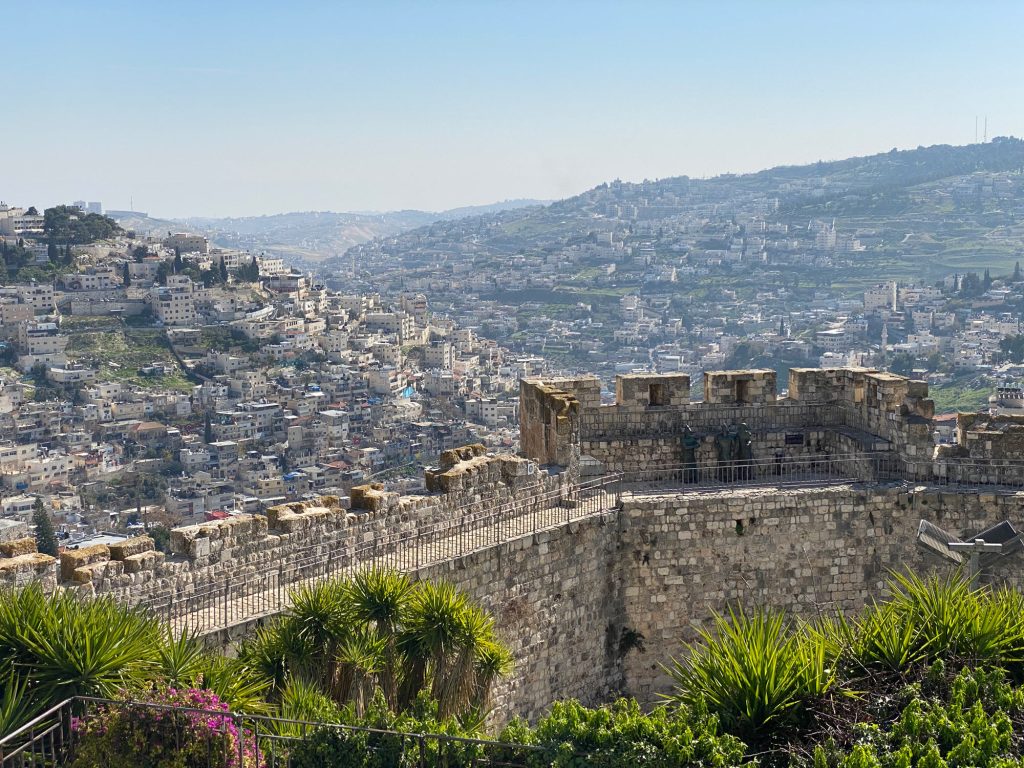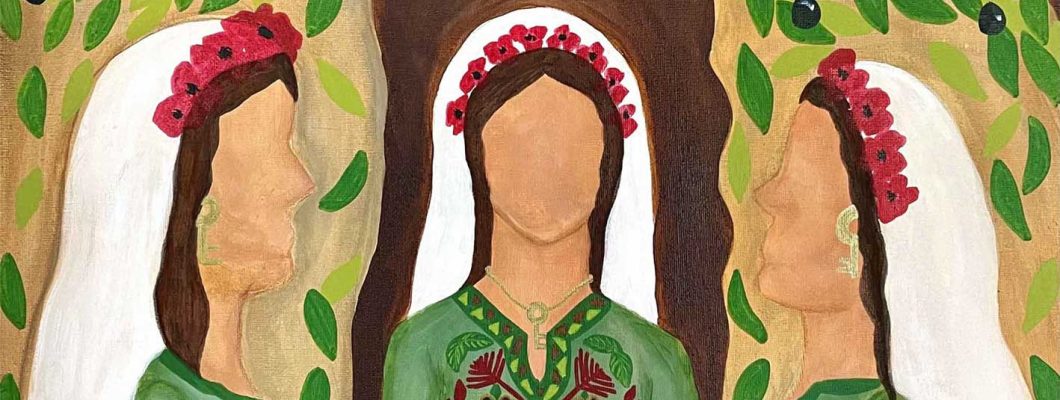I Beg You… Bear With One Another in Love
Ephesians 4:1-3
March 1, 2024

Who among you has not heard of this tiny spot in the Middle East, that for over 3000 years has been significant to three monotheistic religions: Judaism, Christianity, and Islam.
However, the region is much older and has had many names, depending on the many tribes that have settled at different times in the land. The land has been nourished by an unfolding series of civilizations and structures because of its strategic position as a crossroad to three continents: Asia, Africa and Europe.

In 1967, when Israel occupied the Palestinian territories, Western powers called the region the West Bank, because it was on the west bank of the Jordan River. After the Oslo Accords of 1993-1995, the West Bank was divided into Areas A, B and C. In order to travel between any of the areas in the West Bank, Palestinians must go through checkpoints.
As of July 31, 2019, 138 of the 193 United Nations member states have recognized Palestine as a state, and the Palestinian flag now flies outside of the United Nations.
There is a perception/belief around the world that women in the Middle East region are passive, silent, and non-influential. However, the role of women in Palestine (both historically and in modern times) is active and influential. They are steadfast, strong and courageous.
Although Palestinian women have played an influential role in society, there is still room for better conditions. Recently, some Protestant churches have progressed on gender issues, such as ordaining Sally Azar as the first Palestinian female pastor in Palestine.
extract from WDP International Committee

Halima Aziz (b.1999 in Hagen, Germany) is a passionate Palestinian visual artist and design student based in Germany. She spent her childhood in Palestine. Halima had to experience the war in Gaza in 2008 and survived it. In 2009 she moved back to Germany.
This artwork is made in honor of the World Day of Prayer. Through her artwork, the artist represents three Palestinian women praying together in nature in a peaceful place. In her work, the artist has different motives and symbols that indicate the origin of these women and their cohesion.
Olive trees/ branches are a sign of everlasting and abundant life because they can live for thousands of years.
The golden roots are underlining the fact that the Palestinians will always exist and as they exist, they will always resist for their rights and freedom.
Poppy flowers are abundant and meaningful to Palestinians. They remind Palestinians of loved ones who have given their lives for their country.
Traditional Palestinian dresses like the tatreez (embroidery) thobe (dress) or the white scarf.
The keys are a symbol of the hope to return back to Palestine.



